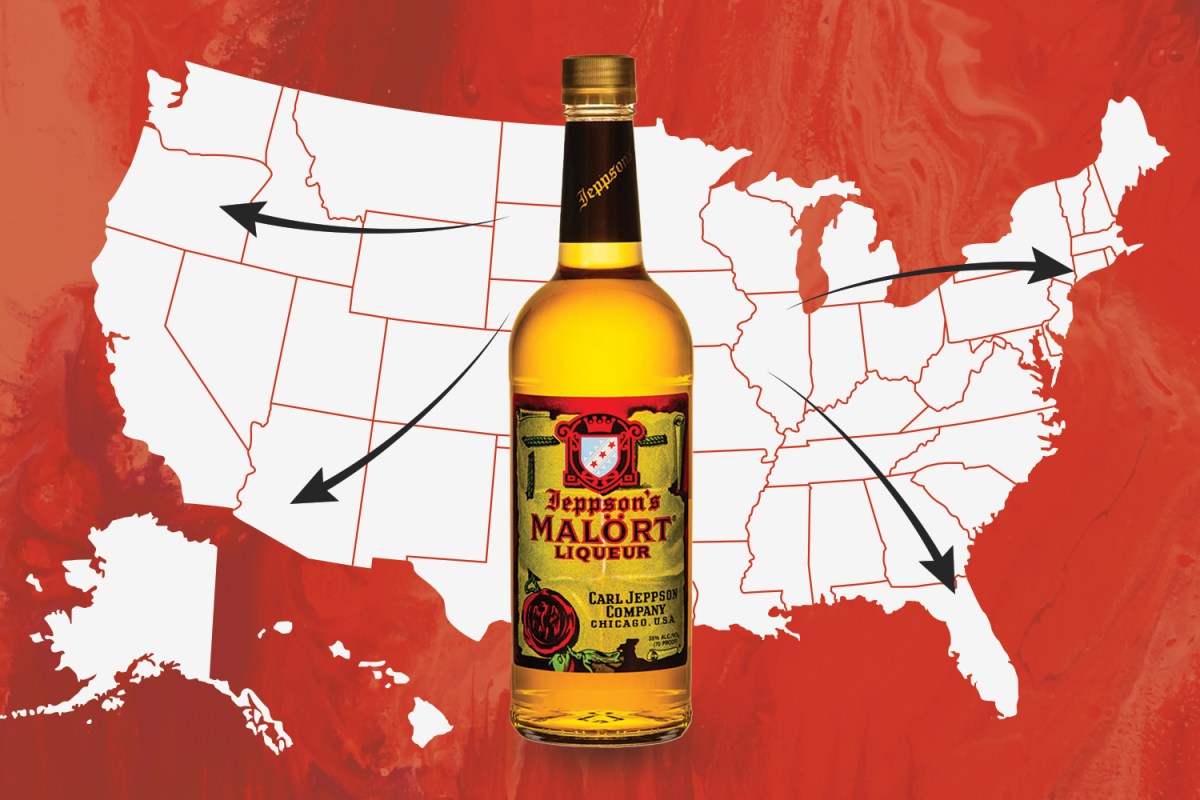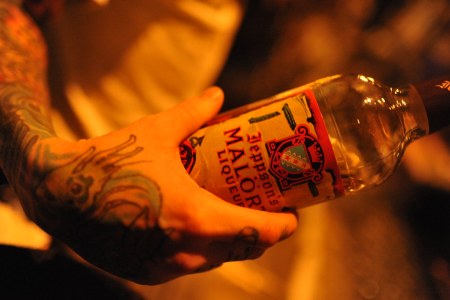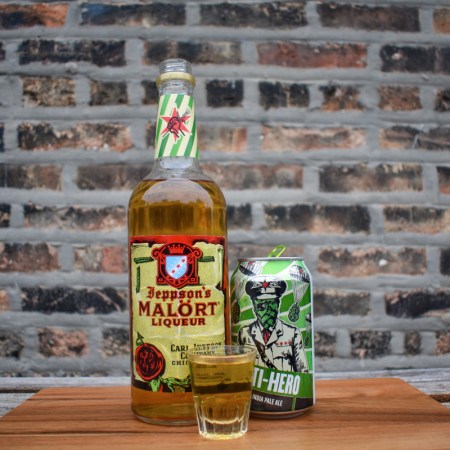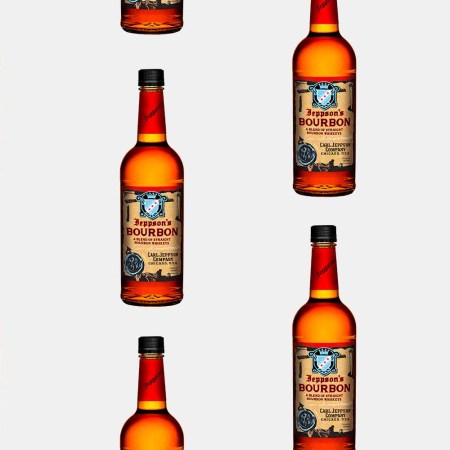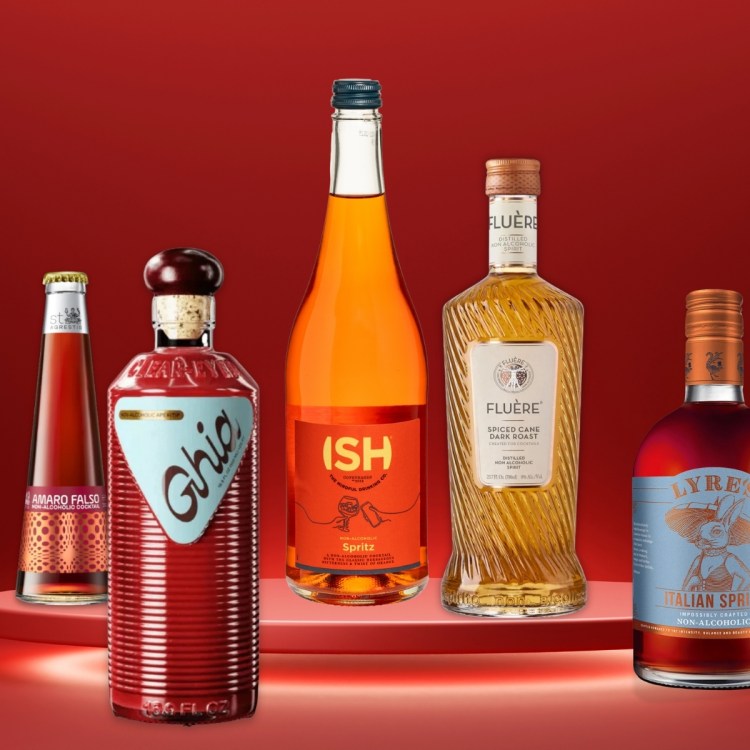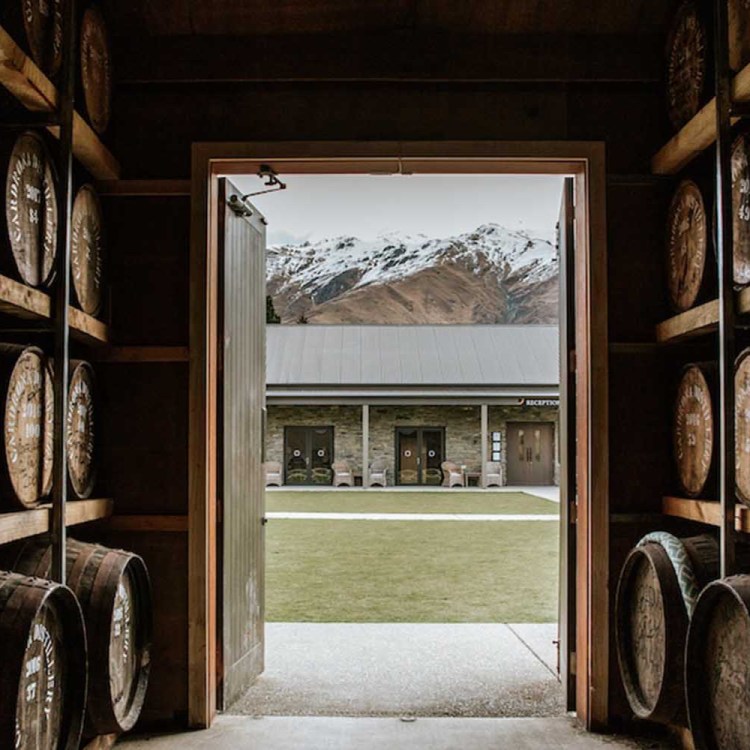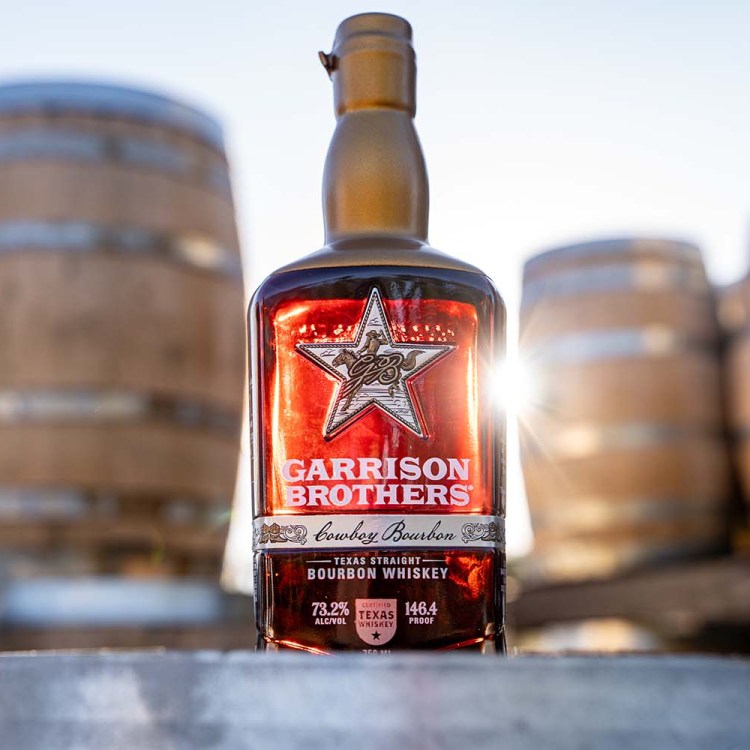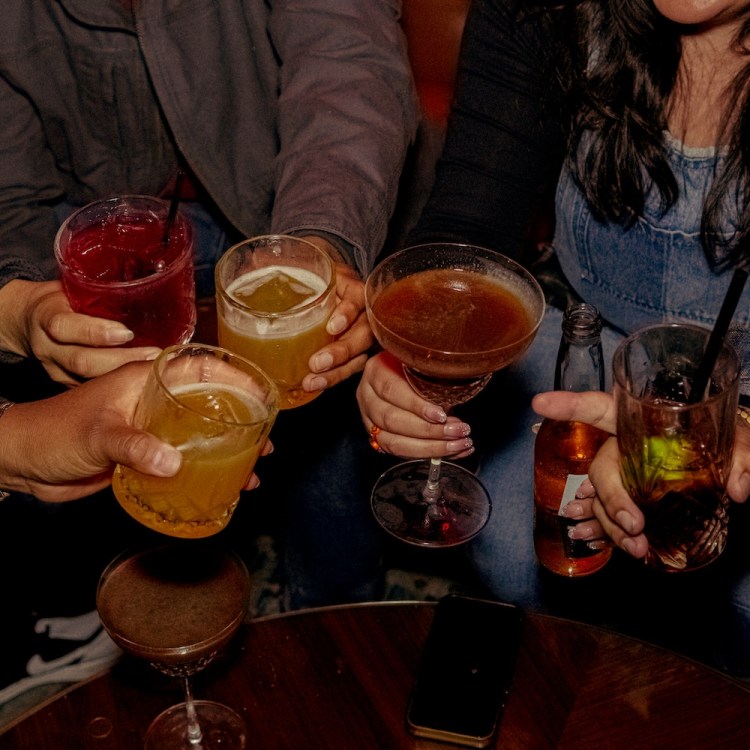If you’ve ever found yourself in a bar in Chicago, chances are pretty good you’ve been offered — or pressured into — a shot of Jeppson’s Malört, the bitter, herbaceous brand of bäsk liquor. Being able to throw it back is a point of pride for locals, a challenge even, though some brave souls claim to genuinely enjoy the flavor. (That flavor, by the way, has been likened to everything from grapefruit juice and lawn clippings to gasoline.)
Thanks to the success of The Bear, there’s been an uptick in nationwide interest in other Chicago delicacies like the Italian beef sandwich. We haven’t yet seen Carmy and Richie doing shots of the city’s beloved-yet-disgusting wormwood-based booze onscreen, but Malört seems similarly poised to take the country by storm. In 2018, the brand was purchased by CH Distillery, and after decades of being a Midwest exclusive, they recently expanded Malört’s distribution from four states to more than 30. Now, brave drinkers all over the country have the opportunity to share their “Malört face” on social media and experience the Chicago staple for themselves.
We caught up with CH Distillery co-founder and CEO Tremaine Atkinson to learn more about the decision to go national with the brand, how Malört can help settle your stomach and why mixing it with grapefruit LaCroix isn’t such a bad idea.
This conversation has been edited and condensed for clarity.
Jeppson’s Malört Distillery Will Begin Making Hand Sanitizer
The bitter Chicago booze becomes hand sanitizerInsideHook: Tell me a little bit about the decision to take Malört national and expand distribution? What inspired that and how did it come to be?
Tremaine Atkinson: So, when we bought the brand from Pat Gabelick, basically from the family that had it for years…she literally ran the company from her apartment on Lake Shore Drive for 30 years until she sold it to us. And she didn’t even have any employees, although that did change later and very importantly for the good.
But she had a great setup because the production had moved to Florida — it had to because there were no distilleries left in Chicago at that point. Ao all she had to do was send an email to Florida and say, “Make a batch and ship it up to the Wertz family and they’ll sell it.” And that’s what happened for years. She didn’t have a sales force, she didn’t have really any infrastructure, so that was the state of the brand when we got it. Now, Sam Mechling came along. Let’s see, I won’t get the exact year right, but I think it was around 2010. He was a bartender, and he basically, on his own, started spreading the word about Malört because he loved it so much. And then he got in trouble. I’m sure you probably heard the story, but he got in trouble for making and selling T-shirts on a trademark brand. Pat called him in and he ended up with a job as a part-time marketing guy. But he really spearheaded the expansion of Malört’s popularity.
So it was in a couple of other states because Sam just made friends in the industry. We’re a small, locally-owned company, but relative to Pat’s operation, we’re kind of big and corporate. So we have a sizable sales team (which as of today is like six people) and a marketing team, so our thought was “Well, heck, let’s take advantage of that. Why not just spread the word of Malört? But let’s keep the vibe. Let’s not turn it into something that it’s not.” So, yeah, it was pretty simple motivation; buy the company and try to sell more and have fun with it.
You sort of touched on this a little bit, but how important is it to you now that you are going national and expanding the distribution to really maintain that Chicago identity and the Chicago connection to Malört?
It’s really important. And it’s a little more than just the Chicago connection. And it always feels a little funny talking about this in a serious way, but it’s got a real vibe to it. The thing about Chicago that I think is relatable to people, even if they don’t know much about Chicago, is that sort of gritty, hardworking, tough Midwest mentality. We go through these brutal winters why? Because that’s what you do. It’s what you do for your reward. And Malört just goes along with that. We put up with all kinds of crap that people in California don’t, at least weather-wise and lifestyle-wise.
Malört is part of that. Maybe it’s a little rough, but in the end it binds us, it keeps us all together and it’s just got that badass thing. That’s what’s important to us. We’ve really went through a lot of thought and exercise this year about how to talk about the Malört and how to promote it. We’re gearing up to do our first real ad campaign, and we started with a blank slate and thought about a lot of different ways to try to talk about it. It does have some product attributes, like it’s low in sugar, wormwood maybe has some medicinal properties (you find it in supplements all the time) and then like, “No, it’s not that it tastes gross, it’s that it’s cool.” At some point we went through all that stuff, and we always keep our eye out for what people are talking about when they talk about Malört. And people love making fun of it, and they love saying how it tastes disgusting and it’s like the worst thing and “Why would you ever do that?” We’re like, “All right, let’s just continue to embrace that and not spin it in another way.” Because Malört is what it is. It’s already an established thing.
One thing I think is really funny about Malört is that you ask everybody what it tastes like to them, and everybody has a unique answer — everybody picks up on a different thing or describes it in their own way. So I’m curious how do you describe the taste of Malört? If somebody who’s never had it before asked you what it tastes like, how would you describe it?
My go-to is “take a whole grapefruit, and just take a big bite out of it.” And that is very similar to the experience of Malört. Think about a grapefruit, the flesh, the juice, the peel, the outside and then the pith, maybe most importantly, which is where all the bitterness is. ‘Because Malört’s got that. It’s got all that going on, and then with some weird grass trimmings from your lawnmower. Because it’s got something else going on — it’s not just grapefruit.
I’m curious what the breakdown has been since you expanded distribution. I’m assuming that Illinois still makes up the majority of sales, but in what areas have you seen an increased interest in Malört? What other states are big Malört buyers?
Illinois, and Chicago within Illinois, is still the biggest buyer of Malört. And then over the last couple of years, the market that has really grown is the state of Washington, so Seattle and then Colorado and Minnesota — I don’t know why it took us so long, but we finally got started just about a year ago, and that’s done tremendously well.
I got an email from the gentleman who covers the Midwest for The Economist, and he is like, “I need kind of just a fun, weird piece. Can we talk about Malört?” And so we chatted about it and they ended up putting a little graphic in about the biggest binge-drinking states in the country. And Wisconsin was number one, which went well with the idea that Wisconsin drinks a lot of Malört. Not that we’re promoting binge drinking, but it’s probably less worse for you than other things you could drink a lot of. Texas is also doing pretty well. And then, maybe a little less by volume, but really, really big on engagement and embracing, is the city of New Orleans. A couple of bars there are just absolute fanatics and spread the love, and it’s pretty cool.
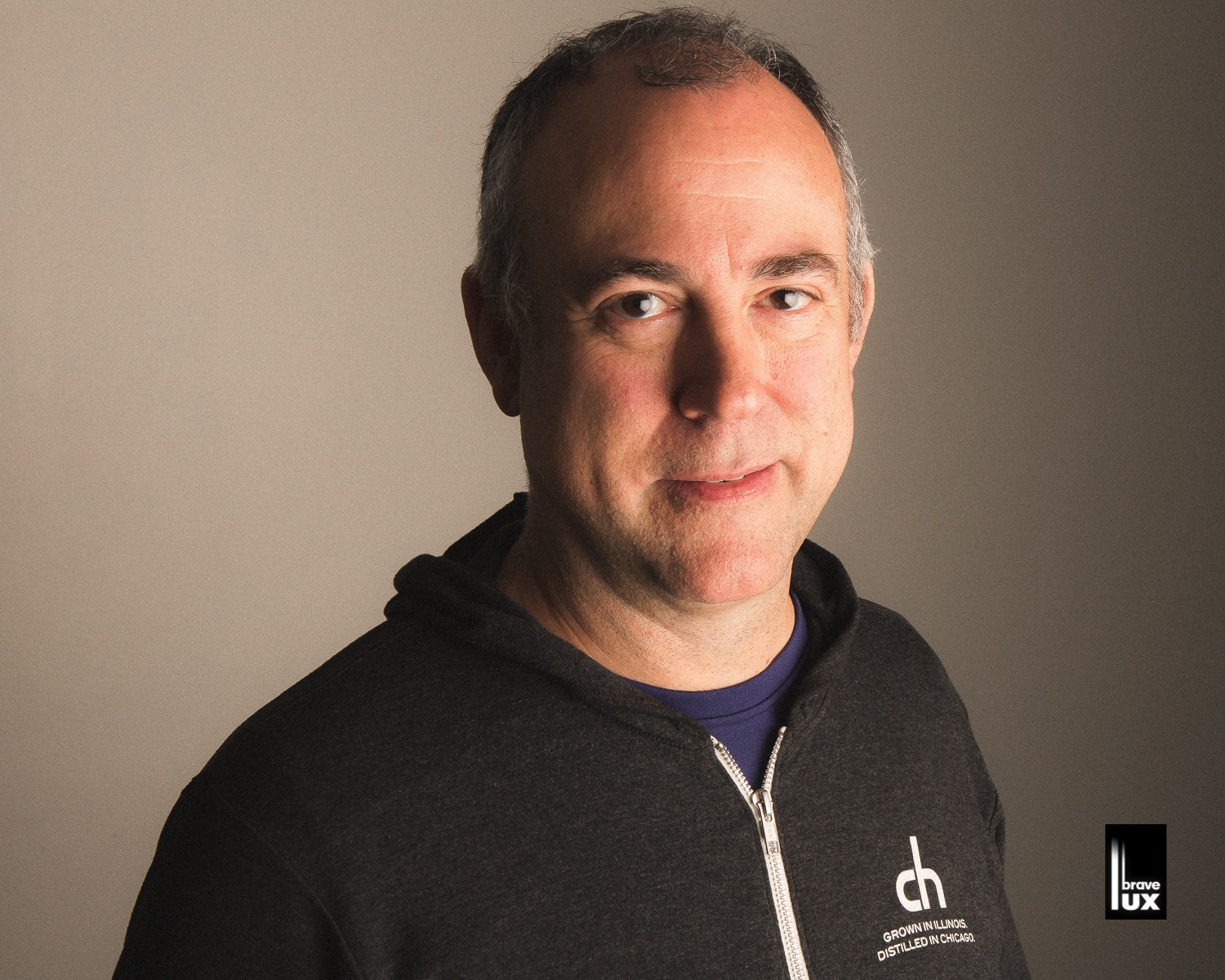
What do you attribute the rise in nationwide interest in Malört to? Is there anything in particular that you think has sparked people’s interest in it? Or is it just natural expansion and growth?
It’s a little natural and us making the effort to get distribution now in 30+ states. There’s two ways basically to do national distribution. Because alcohol is obviously regulated at the state level, so there isn’t really such a thing as national. It’s not a food product where you can get a big national distributor to cover the world for you. So there’s two ways: you can line up with one of the big distributors that has locations in a lot of states, but none of them have all 50, or you can do what we’ve done, which is we’ve basically been a little passive on it, where we’ve ideally waited for a distributor in the state to contact us and say, “Hey, we’re hearing a lot of buzz about this. Can we carry the product?”
So we’ve done a lot of it that way, but I think the reason the demand is out there is social media. Flat out. There’s no question. And it’s natural social media. It’s like people just posting about Malört because they like it, it’s not us posting about it. Our job is to just facilitate that and make the content more available to more people. But I think that’s what it is. And I think that it’s odd — a lot of people are like, “Oh, you had a liquor company during the pandemic, you must have killed it.” And most of our business is at bars and restaurants. So our business definitely went down significantly. Of course, now it’s rebounded really nicely, but I think during the pandemic we got [a lot of engagement] because it’s a perfect thing to talk about. Even if you couldn’t drink it, even if it wasn’t available in your market because it’s liquor-related, check, kind of oddball, check, a little bit like “What the fuck is going on?” That’s right. That’s a check. So that’s pretty simple. That really helped awareness.
Talk a little bit about Malört as a digestif because I know people actually do say that it helps with their stomach issues. I know that some people swear by having a shot of Malört after dinner or a big meal. Is that something you’ve encountered a lot, people using it that way?
Yeah, and that’s its origin. You could say that Malört is an amaro, and basically every European culture has an amaro because it’s a natural thing that bitter substances settle your stomach. Wormwood is probably the most bitter natural substance there is. And it’s also got at least the reputation for literally being able to kill parasites back when food preservation wasn’t quite as good as it is today. So that’s the overall tradition that it comes from.
“Malört” is the Swedish word for wormwood. Actually, in Sweden and particularly in southern Sweden, they call it Besk. And, it just so happens that’s where Carl Jeppson grew up. I’ve actually been to his hometown, and I’ve been to the wormwood harvest festival, and it just like, grows in everybody’s property because it’s a really hardy plant. Liquor is expensive everywhere, so if you have cheap booze, it’s a way to make it taste better. I mean, that’s how gin came about in the first place — taking horrible-tasting booze, taking whatever cheap stuff you have that grows in your backyard, and soaking it in there. That’s how Besk came about, and that’s what Carl Jeppson had a taste for when he moved to Chicago. Wormwood grows in this climate, so he just started making it at home, but it is really good for after a big meal. I’m not gonna claim that everybody who’s drinking Malört just had a big meal. It’s a fun shot, it’s a celebration kind of thing. But personally for me, I now drink a little bit less than I used to as I’ve gotten older, but I have a favorite weekday thing. Last night I had some good pizza for dinner. And what I had with it was just a little bit of Malört and a grapefruit LaCroix. I love the flavor of Malört, but it’s got that sort of stomach-settling quality to it as well. So you can eat more pizza.
People are even making Malört cocktails now, rather than just having it as a shot. What are some of the best examples you’ve seen of a Malört cocktail?
My personal favorites tend to be along the lines of things like tiki cocktails, things that have fruit and rum and stuff in them. You add a half ounce of Malört to a well-balanced tiki cocktail, and it just gives it structure. It plays really, really well with those fruity flavors. Right now at our place, at CH on Randolph Street, we just did our fall cocktail menu, and I can’t believe I hadn’t seen this before, but we have a white Negroni — London dry gin, Malört and white vermouth. And it’s brilliant. It’s stout. It’s got a bitter backbone for sure, but it’s a great cocktail. But it doesn’t work well with everything. Try to put Malört and bourbon together, and, yeah. They don’t play.
Sort of a big picture question, but what do you think the future holds for Malört? If you were thinking 10 years down the line, where Malört would be in the grand scheme of things? What are you hopeful for in the future?
It’s our 90th birthday, but it’s actually been around even longer than that. So I’m always really cognizant that it’s been around a lot longer than we have. And my goal for it is to just continue to be relevant, and it’s something that’s been around 90 years and is now more popular than it ever was. It’s either a fad or it’s got staying power, and I believe it’s got staying power. It’s almost our obligation being stewards of this brand to continue to feed it the right way. As American business people, we just all have the growth, let’s say illness. Like if we’re not growing, it’s not right. But to me, the thing about growth for something like Malört is it’s a great defensive strategy for it. Because the more we grow it, the more it’s gonna hang around. As a small piece of fun, popular culture, Malört has got a real place, and it should keep it. So that’s where I want it to be 10 years from now or another 90 years from now.
What drew you personally to Malört? What was your first experience tasting Malört, and how did you decide that this was the path that you wanted to get involved with?
I have a typical first Malört shot story. I moved here 25 years ago and was out drinking with a friend who’s from here. And at the end of the night, he was like, “Oh, you gotta have a shot of, well just have it,” and it was Malört and I took the shot and I was like, “What the fuck was that?” And then I was like, “Mmm.” Five minutes later I’m like, “That’s still hanging around, but can I have another one?” [laughs] And then, I had it off and on, and then when I started CH Distillery 10 years ago, I got more interested in a lot of things. So I picked up the bottle of Malört, saw it was made in Florida. I didn’t realize it up until then. And I was like, “Okay, somehow I need to bring this back to Chicago because it left because there are no distilleries, but there are distilleries here now.” So it was a personal interest and a business interest at the same time. Through Sam Mechling, I started having a conversation with Patty, and it took a good four or five years to get it all together, but we got it all together.
Every Thursday, our resident experts see to it that you’re up to date on the latest from the world of drinks. Trend reports, bottle reviews, cocktail recipes and more. Sign up for THE SPILL now.
